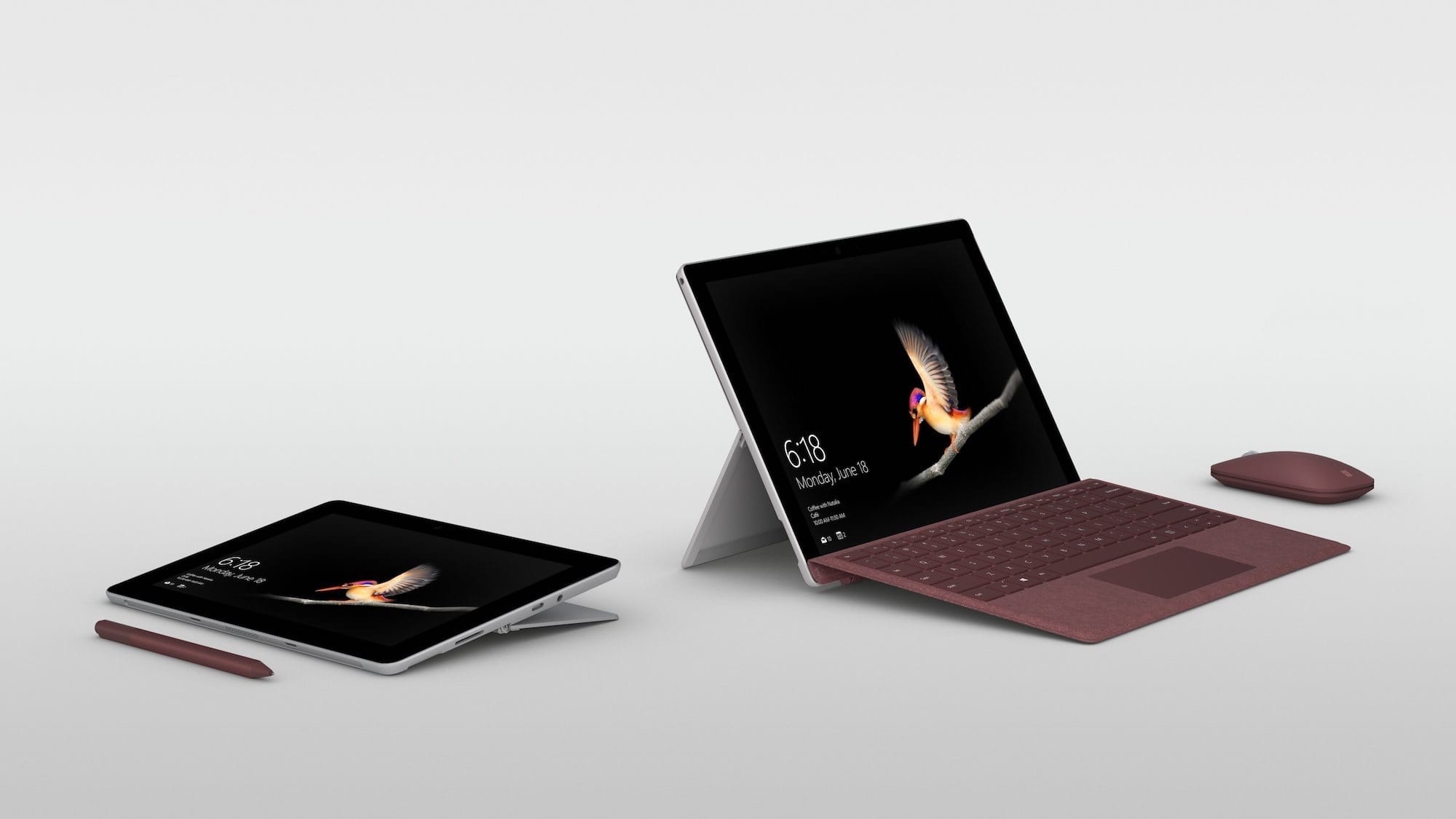Owen Wilson, on Charged:
If you take an iPad-sized device, cram a whole computer into it, then blur the boundaries between PC and tablet completely, you get something interesting: the Surface Go. I’ve been testing Microsoft’s new tiny 10-inch tablet for a few weeks, and it’s totally changed my perception of what computers are going to look like in the future.
I like his take on Microsoft’s new Surface Go, but I have some comments I’d like to share.
The Surface Go is a curious device, because it sits somewhere in-between devices like the iPad and actual full-on laptops, like the Surface Book or a MacBook Pro. It’s small enough to be an iPad, but has enough processing power to run desktop apps if you need to.
I still use a 15-inch Surface Book 2 and while it can be used as a tablet, there are way too few apps that make it as easy or fun to use as an iPad. On the plus side, typical desktop-y tasks are often easier. This is a software problem on both platforms.
The first thing I noticed after booting it up is just how much better the Surface Go’s kickstand is. I’d never loved these things, because they always felt like they were awkward, or got in the way — but the Go’s hinge goes all the way back, meaning it’s able to prop itself up just a little for writing notes or drawing.
I really wish the iPad had an integrated kickstand — just this would make things so much easier.
There’s a track pad at the bottom of the keyboard, unlike the iPad Pro which omits it intentionally and forces you to use only touch as a fine-grained input. Apple has done a hell of a job trying to convince people that a mouse isn’t necessary, but little to actually prove it; I’d always missed a more precise input method when I used an iPad Pro at length.
Apple argues that Macs shouldn’t get touchscreens because it’s not comfortable to hold your hand out in the air to interact with them but that’s precisely what you do if you use an iPad Pro with a Smart Keyboard. A trackpad would go a long way to help solve this.
The final notable piece of hardware is the one you look at the most: the screen. It’s 10-inches, with a resolution of 1,800 x 1,200. That’s pretty good for the size, and doesn’t feel cramped for the most part. The display delivers great brightness and color accuracy, with an ambient light sensor that isn’t overly sensitive to light changes — but it’s all let down by a bezel that feels far too large around the edges.
The iPad Pros have calibrated displays which cover the Display P3 gamut. The MacBook Pros do too. The Surface line (apart from the Surface Studio) does not. Microsoft should remedy this immediately. I also consider the Surface Go’s resolution to be too small and the bezels too thick.
I debated even mentioning this, because I’m frustrated by the constant ludicrous push for thinner bezels that lead to the notch becoming universal in smartphones. Bezels really don’t matter, in practice and the Surface Go’s are not really a problem at all when it comes to functionality, but they are sticking point on a year that the iPad is rumored to lose even more of its already-thin bezel.
Thinner bezels allow for the fitting of a larger screen in the same footprint. That’s a good thing. Imagine if the Surface Go had 12” instead but retained the same external dimensions. That would make it so much more compelling.
My first experience with Surface Go was actually a mind-boggling accident that reaffirmed why I wanted this device in the first place. I received it while at the office, where I use my Surface Book with my screen, through Microsoft’s single-port magsafe connector that charges the device at the same time.
I opened the Surface Go box, but the battery was low from being in transit, so I figured I’d top it up while setting it up and slammed in the magsafe dock cable. It booted immediately, and surprisingly worked with the very same dock, so was on my 4K display at 60hz, with the keyboard and mouse already set up.
This is what I really like about the Surface Pro and Go — one device for different situations.
I’m a huge convert to using the Surface Pen for note-taking and annotation with the Surface Book 2, but the Go is a game-changer because it’s so tiny. It’s just a little bit shy of an A4 piece of paper, and around the size of my existing physical notebook, so it’s a good candidate for full-time notes usage.
OneNote is perhaps Microsoft’s best-kept secret. It’s a solid application with stellar support for inking features, like OCR from your writing, or interpreting what shapes you’re drawing. It’s become my go-to inking app, and is great for keeping a larger notebook of things that are written with the pen. The Surface Go is the killer device for ink, and it makes the Surface Pen an absolute necessity. Because I’m using the Go, and it’s always with me, I now write everything down.
The iPad Pro and Pencil combo are really great for taking notes but I my Pencil is usually too far away from me to bother going looking for it. It’s also usually discharged. Apple really should figure out a magnetic way to attach it to the iPad.
If the Surface Go was available with a higher resolution screen (calibrated for sRGB or Display P3) and smaller bezels, with a 256 GB fast SSD and 16 gigs of RAM, I’d probably go for it. It would make a perfect travel computer for developing my photos in Lightroom.


2 Comments
Leave a reply →